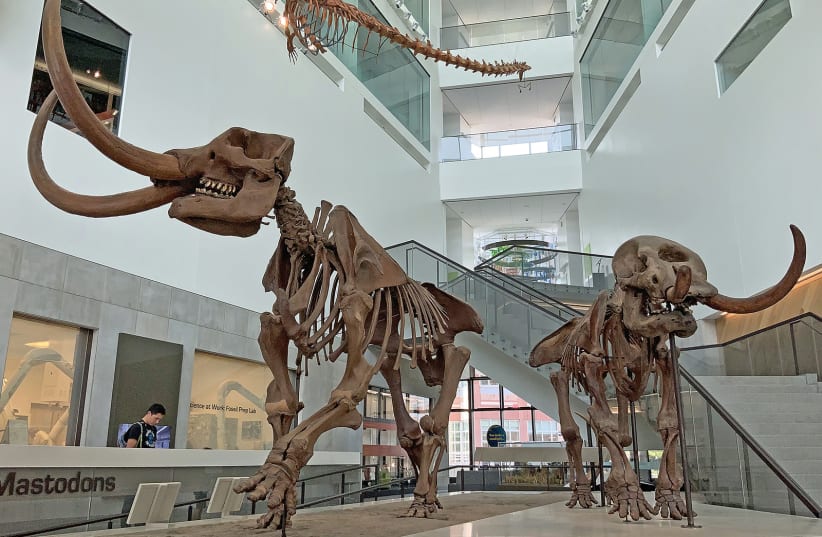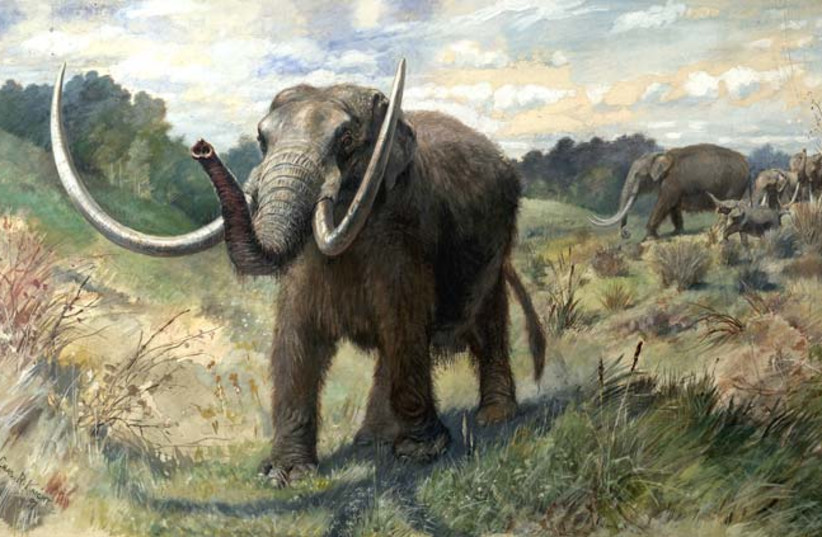Researchers identified a 13,900-year-old bone projectile point, making it the oldest weapon made of bone ever found in the Americas.
The researchers, led by Dr. Michael Waters, professor of anthropology and director of the Center for the Study of First Americans at Texas A&M University, published their findings in a peer-reviewed study in Science Advances last week.
The research team used a CT scan and 3D software to isolate bone fragments that were embedded in the rib of a mastodon, a prehistoric relative of elephants. The rib was initially discovered by Carl Gustafson at the Manis excavation site in Washington state between 1977 and 1979.
"The CT study shows that the bone fragments and thus the object we reconstructed from them was made of cortical bone," the study found. "Because the faces of this object are smooth, we considered the possibility that it could potentially be a bone from the mastodon’s own skeleton, but such a bone would have to have the morphology of the reconstructed object. However, there are no mastodon skeletal elements that are the size and morphology of the reconstructed object. This tells us that the embedded bone could not be from the Manis mastodon’s own body. It must be from some source external to this animal."
The team found that the fragments were the tip of a projectile weapon. According to Waters, the point is 900 years older than other projectile points linked to the Clovis people, which have been found in Texas and other parts of the United States.
"Stone projectile points predating Clovis have been found at North American sites, but none are directly associated with megafaunal carcasses," the study noted.
“What is important about Manis is that it's the first and only bone tool that dates older than Clovis.”
Dr. Michael Waters, professor of anthropology and director of the Texas A&M Center for the Study of First Americans
"What is important about Manis is that it's the first and only bone tool that dates older than Clovis. At the other pre-Clovis site, only stone tools are found," noted Waters. "This shows that the First Americans made and used bone weapons and likely other types of bone tools."
Waters said that the only reason the point was preserved was that the hunter who launched the projectile missed their mark and became lodged in the mastodon's rib.
"We show that the bone used to make the point appears to have come from the leg bone of another mastodon and was intentionally shaped into a projectile point form," Waters added. "The spear with the bone point was thrown at the mastodon. It penetrated the hide and tissue and eventually came into contact with the rib. The objective of the hunter was to get between the ribs and impair lung function, but the hunter missed and hit the rib."
Waters previously studied the same rib bone in a 2011 study published in Science, in which radiocarbon dating was used to identify the age of the specimen and a genetic study found that it belonged to a mastodon.
"Using imaging software, we identified 24 individual foreign bone fragments in the rib and generated accurate three-dimensional (3D) models of these pieces," the researchers said in the new study.
"All fragments were 3D-printed, and 18 of them, representing 99% of the total volume of the foreign bone fragments, were manually refit to reconstruct the morphology of the embedded bone object before it splintered. The six bone fragments that were not refitted were too small or amorphous to permit an accurate match to the reconstructed piece and together comprise only 1% of the total volume of intrusive cortical bone. After the fragments were manually refit, the digital renderings of each bone fragment were digitally refit. Our digital reconstruction replicated the physical reconstruction."
What is known about the Clovis people
Not much is known about the people who used the weapon except that they were among the first Indigenous people to arrive in the Americas.
Waters said the findings will contribute to archaeologists' understanding of them.
"It is looking like the first people that came to the Americas arrived by boat," Waters said. "They took a coastal route along the North Pacific and moved south. They eventually got past the ice sheets that covered Canada and made landfall in the Pacific Northwest.
"It is interesting to note that in Idaho there is the 16,000-years-old Coopers Ferry site, in Oregon is the 14,100-year-old site of Paisley Caves," he added. "And here we report on the 13,900-year-old Manis site. So there appears to be a cluster of early sites in the Northwestern part of the United States that date from 16,000 to 14,000 years ago that predate Clovis. These sites likely represent the first people and their descendants that entered the Americas at the end of the last Ice Age."

